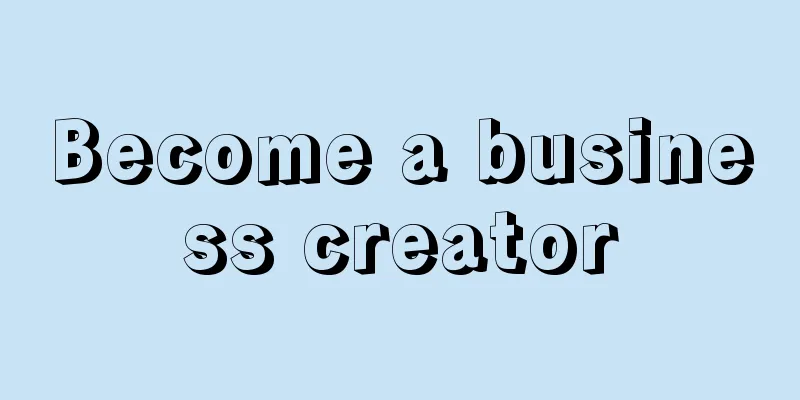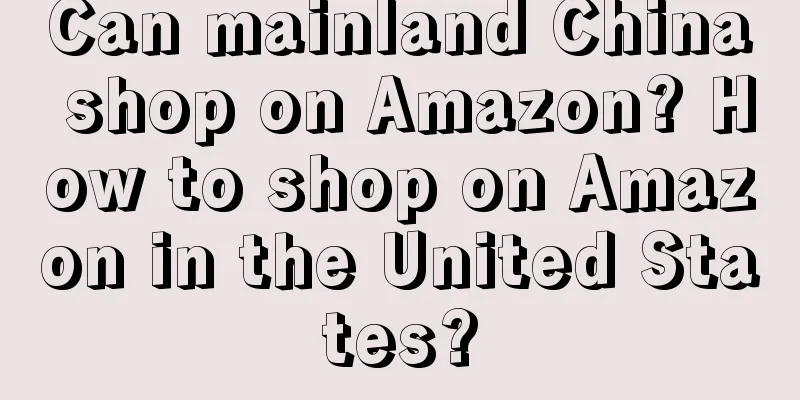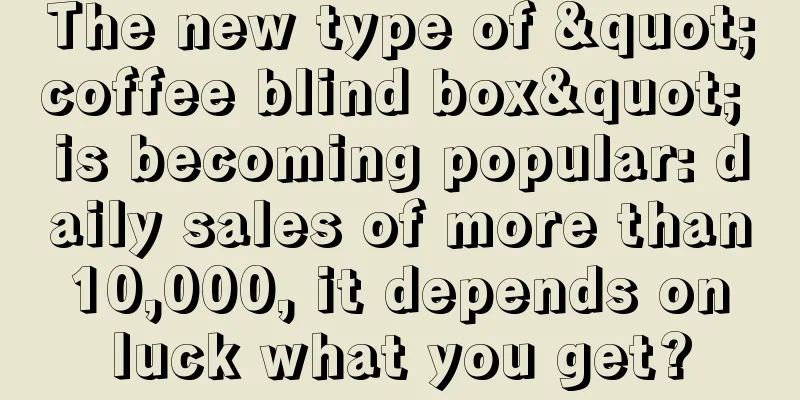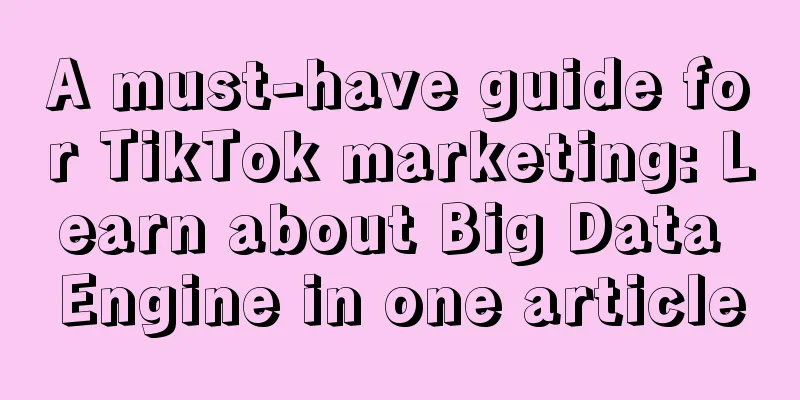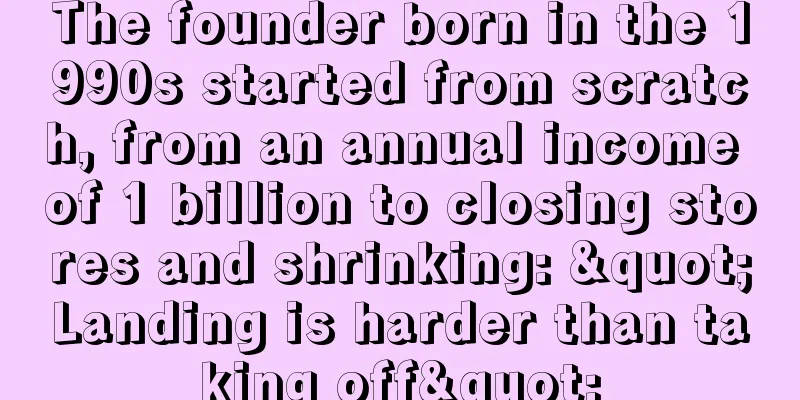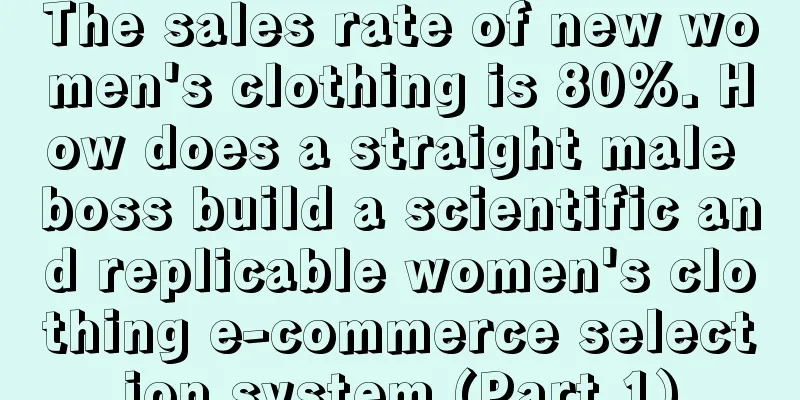More and more people are willing to pay for emotions

The note-taker said: Today, China produces 60% of the world's clothes and processes 50% of the raw materials for clothing. We have too many products, but no big brand. On the one hand, entrepreneurs rely too much on the "explosive product traffic" game; on the other hand, it is also the truth that Chinese consumers are unwilling to pay for Chinese brands. This has resulted in us being trapped in a price war and becoming fodder for channels. To reverse this situation and survive the economic cycle, we must pay attention to brand building. Today is China Brand Day. We have invited the two authors of "Brand Double Helix" Lu Xiuqiong (global expert partner of Bain Consulting, former CMO of Coca-Cola China) and Wang Sai (CEO consultant, author of "Five Lines of Growth" and director partner of Kotler Consulting) to discuss the operating system of brand building with us. 1. From white label to brand, it depends on beliefLu Xiuqiong: The Chinese market is very complex, with white-label, factory-label, famous-label and brand-name products mixed together. White-label products compete on price; factory-label products compete on channel power; famous brands compete on popularity; and brands create premiums through values. If you want to build a good brand, you must first unify all languages from the source. If you only focus on one dimension of the brand, you cannot fully express the connotation of the product. Because white-label, factory-brand, and famous-brand are different growth levers for enterprises at different stages. But a brand is a kind of belief. As a belief, it requires the founder to have long-term values and really want to do things with passion. What Liang Ning said, "Brand is the practice after getting out of poverty psychologically", actually means that the founder's mental strength must grow to a certain stage (not how big the brand is) before he has the firm belief to rethink what a brand is and how to do it. Looking at the famous marketers and founders throughout history, when they first started their businesses, they all hoped to change the industry and truly solve some pain points, itchiness points, and pleasure points for consumers. Wang Sai: I think the relationship between labels and brands is short-term and long-term. Many Chinese companies started out as labels and only built brands after they had a certain scale. Wang Sai (CEO consultant, author of "Five Lines of Growth", managing partner of Kotler Consulting) In the past, we grew up quickly with the model of hot products, but the life cycle of hot products is short. All its consumer drives rely on traffic and products, while brands can widen the moat and enable the company to survive for a long time. This is why it is said that "there are thousands of hot products, but brands are forever." But for many companies, it is relatively difficult to build a brand from the beginning. Therefore, many companies also develop gradually, and even form combinations during the development. For example, Anta was originally a channel-driven brand. As its operating bottom line became more and more solid, its brand became an important investment direction for the Anta Group. On the basis of Anta's original brand, it acquired many world-class brands, such as Arc'teryx and Descente, and then expanded them with Anta's new operating methods. Finally, it entered the global listing from the Chinese system, realizing a multi-brand operation method, focusing on each brand's positioning, image, user connection, and digital operation. It grew very quickly and later became the world's largest comprehensive apparel brand group. Brand is the belief that the founder should have from the beginning. Only with such a belief can we carry it through when polishing products and brand communication. Building a brand does not simply deny the first three types of brands above the brand - white label, factory brand, and famous brand. There is an advanced relationship between these four. Channel empowerment and differentiated preferred mindset are the foundation, but what truly achieves a brand leap is the resonance of values above popularity and above differentiation. This is the top-level difference among differences. In today's marketing industry, there are many opinions and views on brand definition, with excessive focus on the dissemination of brand extensions and lack of understanding of brand connotations. Some people also believe that brand is the accumulation of a series of evaluation dimensions such as popularity, reputation, loyalty, etc., and the perception that "brand popularity is enough" is rampant. 2. Five levels of brand buildingWang Sai: Many people fail to build their brands well because they have a deviation in their thinking – they only see one side of the famous brand. In fact, brands have multiple dimensions. Whichever dimension you come into contact with will be used as your understanding of the brand: when you come into contact with the strategic dimension, you will focus on rational analysis and rational structure; when you come into contact with the public relations dimension, you will pay attention to timing marketing; when you come into contact with the creative dimension, you will pay great attention to advertising and ideas. Therefore, brand includes both rational thinking and emotional thinking; both strategic thinking and planning thinking; both active thinking and comprehensive and operational thinking. This has also led to some companies finding that their brand discourse system has become chaotic after contacting multiple consulting companies: some companies want to build a brand image; some companies want to shape the brand spirit; and some companies want to do brand positioning... In order to solve the problem of too many brand concepts, Lu Xiuqiong of Bain Consulting and I proposed a new framework suitable for consumer brands - the brand double helix, which effectively integrates the brand's intelligence and emotion, rationality and sensibility, humanity and technology. The brand double helix theory divides brand building into five levels: The first layer is Why, which is the original intention of the brand. The origin of the brand comes from the original intention of the entrepreneur to solve some problems for the society and the business world. The mission and original intention not only determine what an enterprise can do, but more importantly, what it cannot do. For an enterprise, it is very important and can affect the business foundation, employee motivation, consumer resonance and social value of the enterprise. Most importantly, the mission can determine whether the company can truly become a leading company that can survive cycles and uncertainties. We especially want to point out that the mission is the inspiration point of the entire brand double helix, because we have never seen a brand that lacks a mission and is driven only by business and profit growth become evergreen or even great. The original mission is the deep meaning of the brand’s existence and the ultimate reason for the existence of the enterprise and the brand. In 2008, a reporter interviewed Musk and asked him: Are you going to make a car? Musk said: I am not going to make a car, I am going to make a car that will subvert the past oil energy. In 2018, the same reporter interviewed him: Are you still making cars? Musk replied: Yes, but my purpose in making cars is to make fossil energy out of the current era, so what I do is a contribution to global climate change. In 2021, the reporter interviewed him again: I think in my heart that Tesla is a very great brand, although many people have different opinions from you. Musk said: Have you ever thought about one thing? After I made the new energy vehicle, I opened up the code and patents, and many competitors came to learn or copy it. If I didn't do this, I would have fewer competitors. But my goal is not to defeat them, but to change the world. The above passage touched me deeply. This is the mission and purpose, and it will become a potential point of the brand. The second level is user satisfaction. Starting from this level, each link of the brand double helix presents a parallel structure, that is, brand growth is driven by both intelligence and emotion. At this level, we will start from human nature and focus on demand insights and track capacity. The reason why user satisfaction is placed at the second level is that no matter how great the mission is, it must be converted into customer value before it can be realized. Therefore, the company must start from the demand and identify the size of the opportunity behind this demand in order to make trade-offs. From user insights, we put forward a very important point - branding is not simply consumer-centric, but centered on consumer preference/behavior changes. Harvard professor Christensen once proposed “Jobs to be There will be great opportunities if we start from the scenarios to find needs, refine the target groups, and then promote products and selling points. Many Chinese companies succeeded by creating scenarios, such as Snickers, which does not sell the taste of chocolate but the energy needed to replenish hunger. Red Bull’s slogan “Drink Red Bull when you are tired and sleepy” is also about building scenarios. The third level is market breakthrough, which is mind capture and product design. Only at this level can the direction of the brand and product be truly determined. On the premise that the capacity of the previous track is met, we need to go back to the mental level to see if the brand has opportunities, and then design products based on this. By occupying the minds of consumers, the brand becomes the first choice of consumers. When occupying the mind, an important factor to consider is occupying the scene of consumer use. For example, Wanglaoji has derived the slogan "If you are afraid of getting angry, use Wanglaoji" by linking scenes with products. Only products in clear scenes have meaning. The booming food delivery market gave Hubang an opportunity. Looking back at the data of that year, it was in 2016 that the food delivery market showed explosive growth, with a transaction volume of about 152.4 billion, a year-on-year increase of 232%. There is no branded hot sauce in such a huge market, so Hubang decided to invest all its resources and manpower into the niche field of takeaway table sauce, while focusing on products and business. For its products, Hubang has improved the packaging, changing from traditional large glass jars to lightweight plastic strips, and lowered the price to 3 to 5 yuan to make it easier for takeout users to add orders with their meals and to get discounts when placing an order. The entire strategy of Hubang Hot Sauce is based on the concrete deconstruction of the track. Starting from the takeaway scenario, it finds a small incision in the takeaway condiment category under the large category of seasonings, and confirms that the takeaway scenario is high enough, and finally finds a breakthrough point. The fourth layer is brand upgrading, which is mainly divided into brand dimension and structural system. In terms of brand dimension, we propose five new brand dimensions: value height, personality warmth, scene intensity, memory depth and relationship thickness. In terms of value height, brand positioning and core values should run in parallel. For example, Zhuyeqing is positioned as the "leader in the high-end green tea industry." This is a positioning, but it does not belong to the core value, and consumers may not necessarily have a desire to buy it. Looking at Rolls-Royce, it is positioned as the highest-end luxury car, and its core values are nobility, luxury, and scarcity. Positioning and core values running in parallel can form a brand. The warmth of personality is the personification of the brand, which makes the brand attractive and resonates with consumers. For example, when Xiaomi delivered its cars, Lei Jun opened the doors for the first batch of users. The core of scene intensity is to awaken consumer demand. The new ramen brand "Ramen Says" has worked hard on scene intensity, and enhanced the value recognition of the target group through the scene of "eating well even when alone". The depth of the relationship is to establish a deep relationship with consumers and tap into their long-term value. For example, lululemon has accumulated a high-efficiency reputation through circle culture. The depth of memory is simply to generate sensory signals for consumers, which can be achieved through the mixing of the five senses. Take the famous Westin Hotel as an example. The Westin Hotel focuses on rejuvenating the body and mind of its customers, and has designed a brand experience system based on this guideline. In terms of touch, there is the first-of-its-kind "Heavenly Bed", in terms of hearing, there is the "Westin Music" in the lobby, and in terms of smell, there is the aroma of white tea that can be smelled at will. These sensory experiences constitute the core value of the brand. Today, brands need to bring emotional experiences to consumers. Sentiment and emotion are both subjective experiences formed by consumers' evaluation of external things. Among them, sentiment refers more to the subjective experience in the emotional process, emphasizing the feeling aspect of the emotional process, and is more of a relatively stable consumer evaluation indicator. In the business world, there are many examples of using emotional value to penetrate consumers' hearts, and advertisements often attract consumers by creating emotional resonance. For example, Apple's "Think Different" campaign strengthened its brand image and product sales by inspiring consumers' self-realization and sense of belonging. Product design can also convey emotional value, such as IKEA's "emotional furniture" design, which emphasizes a warm and comfortable family atmosphere and enhances consumers' purchasing experience and brand loyalty. In the service industry, companies such as Shangri-La Hotels and China Eastern Airlines enhance customers' emotional satisfaction and loyalty by providing personalized and caring services, such as surprise gifts and greeting calls. Additionally, many brands build emotional connections by telling engaging brand stories, such as the story behind Nike’s “Just Do It” slogan, which inspires people to overcome difficulties and pursue athletic achievements. The brand structure system refers to how many brands are needed to meet market demand and the relationship between these brands. For example, when Hanting started out, "Hanting" was a mid-to-low-end brand, but it wanted to extend upward and created "Huazhu", and then extended to "Quanji", and then to "Joy", as well as many resort brands. This takes into account the brand portfolio or brand architecture, and it is a highly rational and strategic decision. The fifth layer is the global link, which is the "last mile" for us to reach users. In the past, the consumption link was very simple, and all you had to do was advertise on major media. Now, consumers can link to any touchpoint. The ultimate goal of the link is to directly trigger the purchase button by integrating the link. Links are the new logic for brand implementation in the digital age. If integrated marketing communications (IMC) is intended to occupy the minds of consumers, then links are intended to directly influence the decisions and behaviors of consumers in the digital age. For example, after Xiaomi’s press conference, many people were searching for “Where can I test drive a Xiaomi car in Beijing? Where can I buy a car?” This information cannot be found on Baidu, but can be found immediately by searching on Xiaohongshu. This is the change in media structure. Today, Xiaohongshu and Douyin have changed the logic of consumers' purchase of brands. For example, Xiaohongshu's KFS strategy (Kol (creator) high-quality content detonation + Feeds (information flow advertising) precise reach and efficiency improvement + Lu Xiuqiong: I have worked in large companies and also as a second-party. During this process, I have a deep feeling: Chinese brands or Chinese founders tend to have one unique brand and hope to win with one move. But branding itself is a long-term thing. They have not thought about "what is a brand" and "how to build a brand" in a systematic way. This is also our original intention for writing this book. 3. The essence of a brand is to create value for consumers1. How can a brand differentiate itself?Lu Xiuqiong: In fact, brand building does not necessarily require differentiation. The so-called involution is because we are all staring at each other's competitors. Lu Xiuqiong (Global Expert Partner of Bain Consulting, former CMO of Coca-Cola China) It is easy for Chinese entrepreneurs to find shortcuts and make quick money, but the essence of a brand is actually to create value for consumers. How to create value? First, we need to find out the real needs of consumers. In fact, for a long time in the past, many brands have discovered "false demand". Your product is good, but it is not necessarily a real demand. For example, low-alcohol liquor is a pseudo-demand, and Jiang Xiaobai is a typical example. "Giving young people their first sip of liquor" is a small incision of the brand, but the real demand is not liquor, but the self-expression of young people. The success of Meijian also defined green plum wine, but it did not solve the problem of why people drink green plum wine. The final positioning was that Meijian is a Chinese table wine or an oriental table wine. Its real competitor is not white wine, but wine. So green plum wine is not a real demand, but "accompaniment to meals" is. This is a very typical scenario-driven thinking. At the same time, it also has the brand concept, including the height of value, the warmth of personality, the depth of relationship, etc. Second, whether your business model is feasible. When there is hot money, people who are good at traffic can produce very good data, such as the top three in Tmall’s sub-categories! You can also quickly iterate your listing offline, recruit 100 distributors, and send a batch of goods to "hand in your homework". But few people think about what is the essence of business, what is sustainable long-term competitiveness? What real needs of consumers have I solved? How can my business model achieve sustainable development? True brand building starts with the original intention, focuses on choice, and requires sorting and iteration. It does not depend on how much advertising money is invested, and it is not in a rush to pursue short-term results. Instead, it serves as a guiding light for business development, helping companies do better and live longer. It is a higher stage that can only be achieved after achieving "psychological poverty alleviation." Without long-termism and neglecting the exploration of paths to sustainable business success, brand building will be just empty talk. So, I always feel that there is no differentiation in brand building. The pits that our predecessors spent billions and tens of billions of dollars to step into are still similar today, even though there are many new short-term traffic strategies, but many of the underlying things are similar. The real difference is whether you can start from the consumers, find out their real needs, and insist on doing the right thing on this basis. 2. Believe in the power of brands and believe in long-termismLu Xiuqiong: The past decade has actually been a decade in which the marketing environment has become increasingly complex, and marketers have become increasingly confused. There is a very interesting phenomenon: more traffic, but weaker brands. Some brands can produce hundreds of thousands of short videos, but consumers have short memories and shallow cognition. Bain published a white paper in November last year, “The Lost Decade: Return and Start Again”, which caused a huge response in the industry, largely because everyone realized that the traffic dividend has passed and the so-called performance marketing seems to have reached its ceiling. When a foreign client of mine visited China, we took him to see various platforms. Later he said to me: Now I understand what digitalization is. It is not consumer acquisition, but consumer For all traffic, consumer leasing is short-term and does not form centralized memory or cognition. It can only form a shallow memory at a certain point. In the early years of marketing, there was a branch called trade marketing (focusing on one transaction), which was responsible for the placement of all shelves and display cases in the store. Today's traffic has the same problem, except that the traffic has been digitized. It may be a bigger problem than selling display cases in the early years. It is a variable cost calculated on a per capita basis. What is the difference between so-called traffic advertising and early marketing? Isn’t it just selling products next to the shelves? The only difference is that today it is on e-commerce. He also told me that the biggest difference between marketing and selling display boards in the early years is that selling display boards at least has fixed costs, how much does one display board cost, but traffic advertising has variable costs, how much does one person cost, and there is a big problem with traffic advertising, that is, when you make a click, you don’t remember what brand it is. This is why everyone has a lot of reflections on traffic advertising. The most famous thing about IPA's tenth anniversary is The long and the short of it. Ten years ago, they proposed that the ratio of brand advertising and performance advertising should be 6:4. In the past ten years, they have looked at many new categories and new media environments, and the conclusion is still 6:4. We read the IPA report and did a lot of tests, and found that performance and market have better results in the first month; after about six months, brand advertising and performance advertising are basically on par; after a year, brand advertising is about 1.5 times the performance advertising. Traffic advertising may be the biggest pitfall in today's era. It is a drug that seems to be effective in the short term but brings many problems in the long run. As Jiang Nanchun said, planting grass is traffic monetization, and planting trees is brand memory. To manage a brand, we should not only be content with short-term sales, but also adhere to the long-term value of the brand. 4. What should we pay attention to when our brand goes overseas?1. Chinese brands going global: from the heaviest to the lightestLu Xiuqiong: What is the most important thing? You can think of companies like TCL that build factories overseas. There are many things that need to be communicated with local governments, and then do a lot of things that change the industry. The same is true for China's new energy. Many things in the industry are also going overseas. The same is true for mobile phone companies going overseas. For example, Transsion is also semi-hosted on Amazon and AliExpress, which is the light aspect. At the same time, it also has distributors overseas and has built an independent website, which can also conduct marketing offline. All overseas expansion, no matter whether it is heavy or light, actually requires rethinking the concept of brand. I think this batch of founders have realized that it is not enough to go overseas with the "white label" approach as before, and they need to rethink the construction of a comprehensive brand system. Anker Innovations, which started from Amazon, has become the world's number one brand in the industry. They are consumer-centric, listen to consumer needs, and continuously iterate their products. This is very different from before, when we focused on color and content, but they have deeply integrated many brand elements (such as ESG concepts) into their VOC concepts. Today, when going overseas, we need to add more comprehensive brand elements to the previous price orientation and identify with the values of the mainstream markets in Europe and the United States or foreign countries, so as to lead the overseas expansion to do better and further. So from the heaviest to the lightest, the overall requirements for the business model and the requirements for capability resources are completely different. 2. Keywords for brand overseas expansion: confidence and abilityWang Sai: From the perspective of market strategy, brand is a gradual upgrade process. The brands of Japan and Germany started from products, then services, and finally transitioned to brands. You may even find that a country’s overseas brand expansion is closely related to its soft power. Are your values universal and recognized by local consumers? Secondly, we need to do some localization. Samsung has done localization in China, but it is far from enough, so Samsung's mobile phone market share in China has fallen sharply. Compared with McDonald's, KFC has done a better job of localization. There is another way for Chinese companies to go overseas, which is to enter foreign markets by purchasing foreign brands. For example, Anta’s purchase of FILA actually shortened the time period for brand building. In fact, there are currently two important issues for Chinese brands to go overseas: confidence and ability. From the perspective of self-confidence, this group of founders has already overcome this problem, which has a lot to do with the country's prosperity and strength. From the perspective of capabilities, there are two overall ideas in the market now: the first is to start from easier places such as Southeast Asia and Africa; the other approach is to attack the most difficult European and American markets first. These are two completely different overseas routes, depending on whether to build a potential brand or a performance brand. For Chinese brands, the goal is to find places where the Chinese business model can be replicated most quickly, such as Southeast Asia and the Middle East. In terms of potential, the goal is to find places where long-term advantages can be maximized, although this is a difficult task. Different concepts determine completely different ways to break into the market. From the perspective of brand upgrading, kinetic energy brands will pay more attention to the overseas expansion of brand value propositions. postscriptToday, when various new consumption concepts emerge one after another, we still need to pay attention to the power of brands. A brand is a spirit and also a barrier. It is the long-term moat of an enterprise and the enduring value core that truly determines the long-term success of a business after all short-term traffic tools have been exhausted. In the early stages of a startup, hitting on a hit product is like holding a lottery ticket to growth. However, only after a company has truly figured out its brand core and strategy can the product become a carrier of the brand concept and then impress a wider audience. In the process of continuously developing products based on the same concept, the brand itself is constantly shaped and spread. When today’s consumers buy products (remember, they definitely don’t lack anything), they rarely do so out of pure material needs. Instead, they buy more out of a “Me in the “We” mentality—consumption is for the purpose of expressing one’s own subjectivity and finding a sense of belonging to a certain circle. What brings consumers a sense of identity and belonging is the differentiated products, services, concepts or experiences that a brand can provide. In the era of consumer sovereignty, there are too many brands and products for people to choose from, the threshold for replicating popular products is getting lower and lower, and the time consumers spend on a certain product is getting shorter and shorter. Therefore, brand power beyond the product is becoming more and more important. We hope that Chinese companies will have a large number of emerging brands, brands that can survive cycles, and brands that will remain evergreen. |
<<: Review a previous sorting strategy in Meituan
>>: TOB customers' private domain operation channel arrangement and feedback
Recommend
Seven things marketers can learn from "The Rush"
Recently, the TV series "Kuangbi" is ver...
Starbucks "listened to advice" and the old logo is back
Starbucks' logo change has caused widespread d...
Oriental Selection sells memberships for 199 yuan/year. Who is buying it?
Recently, the "Selected Members" of Orie...
How to operate Temu EU agent?
Temu, as an emerging cross-border e-commerce platf...
What is the Amazon Fulfillment Remote Delivery program? FAQ
When opening a store on Amazon, you often need to ...
My digital pencil case
If you want to do your work well, you must first s...
Is Shopee safe? How to join Shopee?
Shopee is the leading e-commerce platform in South...
What changes has JD Takeout brought about after two weeks of launch?
JD Takeaway was officially launched on February 11...
Are there any IP restrictions for logging into Lazada? Which regions can log in?
Lazada is now a rapidly growing cross-border platf...
A 10,000-word article sharing the complete practical details of e-commerce testing, my personal practice summary version (Part 1)
In the world of e-commerce, product selection and ...
A pack of wolves surround Xiaohongshu
Xiaohongshu's graphic and text ecology has bee...
How to modify the customer address on Shopee platform? How to switch countries on Shopee?
During the shopping process, sometimes customers n...
What are the requirements for opening a personal store on Shopee? Can you make money just by opening a store?
It is free to open a store on the Shopee platform....
Xiaohongshu focuses on 7 common problems: how to solve the note life cycle and user inaccuracy?
As a content-driven social platform, Xiaohongshu&#...
With 2.5 billion topic views, how did "Wumeizijiang" brainwash the entire network?
Recently, I believe that you who watch videos have...
